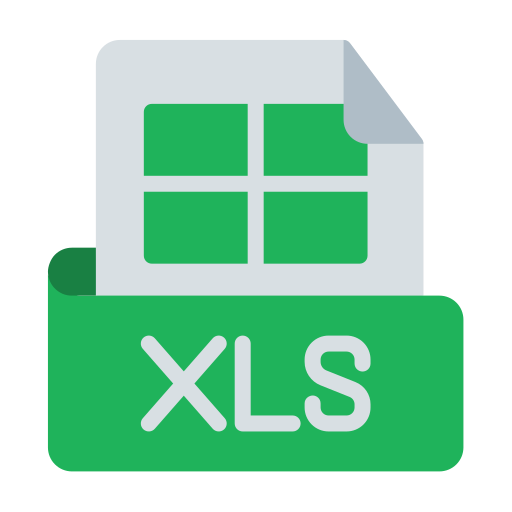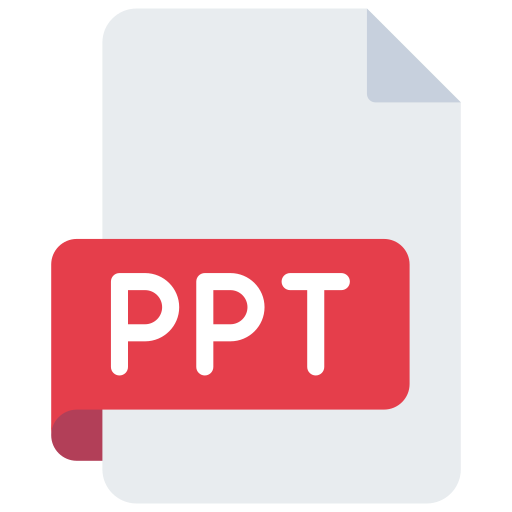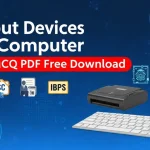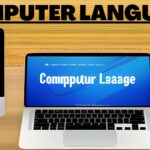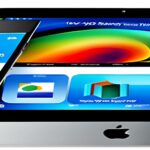Computer Fundamental Short questions SET-1
Question 1 |
Q1. ………. is the maximum amount of data that can be stored on a storage medium.
(a) Optical storage | |
(b) Magnetic storage | |
(c) Solid-state storage | |
(d) Storage capacity | |
(e) None of these |
Question 1 Explanation:
Ans: (d) Storage capacity refers to how much disk space one or more storage devices provide. Storage capacity measures how much data a computer system may contain. For eg. a computer with a 100 GB hard drive has a storage capacity of 100 GB.
Question 2 |
Q2. A …….. is a software program used to view Web pages.
(a) host | |
(b) site | |
(c) link | |
(d) browser | |
(e) None of these |
Question 2 Explanation:
Ans: (d) Web browser is a software application used to enable computers users to locate and access web pages. Browsers trans- lates the basic HTML code that allows us to see images, text videos and listen to audios on websites, along with hyperlinks that let us travel to different web pages. The browser gets in contact with the web server and requests for information.
Question 3 |
Q3. A computer system includes …. .
(a) software | |
(b) hardware | |
(c) peripheral devices | |
(d) All of the above | |
(e) None of these |
Question 3 Explanation:
Ans: (d) A computer system comprises of hardware (physical parts of a computer that can be seen or touched). Hardware may include the system unit which form the core architechture of computer and comprises of CPU, memory, motherboard, buses, etc. It may also include peripheral devices. Which are connected to the system unit. It include input devices, output devices and storage devices. A computer software refers to the set the instructions that directs a computer’s processor to perform specific operations.
Question 4 |
Q4. The term ……… refers to any computer component that is required to perform work.
(a) kernel | |
(b) bootstrap | |
(c) resource | |
(d) source code | |
(e) None of these |
Question 4 Explanation:
Ans: (c) A system resource is any usable part of a computer that can be controlled and assigned by the operating system so all of the hardware and software on the computer can work together as designed. Every device connected to a computer system is a resource.
Question 5 |
Q5. The term …….. refers to data storage systems that make it possible for a computer or electronic device to store and retrieve data.
(a) input technology | |
(b) retrieval technology | |
(c) output technology | |
(d) storage technology | |
(e) None of these |
Question 5 Explanation:
Ans: (d) Storage technology refers to the technology used to store the images or information obtained through the use of some form of capture technology. This includes the medium used for storage the compression methodology used to minimize the amount of storage medium employed, the format used to program the image or information onto the medium, the encoding methods used to represent any interpretation of the stored information and the useful life of the storage medium.
Question 6 |
Q6. You use a(n) ……., such as a keyboard or mouse, to input information.
(a) processing device | |
(b) storage device | |
(c) input device | |
(d) output device | |
(e) None of these |
Question 6 Explanation:
Ans: (c) Input device is any peripheral device used to enter data or information into a computer. It include keyboard, mouse, smart cards, microphones, etc.
Question 7 |
Q7. ………. allows voice conversations to travel over the Internet.
(e) None of these
(a) Instant messaging | |
(b) Internet telephony | |
(c) E-mail | |
(d) E-commerce | |
(e) None of these |
Question 7 Explanation:
Ans: (c) Internet Telephony refers to the technology that converts analog speech (voice) signals into digital signals and routes them through packet-switched networks of the internet. Those signals bypass the traditional circuit switched networks used for telephone calls and thus escape the long-distance phone charges.
Question 8 |
Q8. Which of the following is not true about computer files ?
(a) Every file has a filename | |
(b) They are collections of data saved to a storage medium | |
(c) A file extension is established by the user to indicate the file’s contents | |
(d) All files contain data | |
(e) None of these |
Question 8 Explanation:
Ans: (c) A filename extension is a Suffix (seperated from the base file name by a dot or space) to the name of a computer file applied to indicate the encoding (file format) of its contents or usage. eg. .bar, .doc, .htm, etc. .doc represents a document file format.
Question 9 |
Q9. A ……… is a large and expensive computer capable of simultaneously processing data for hundreds or thousands of users.
(a) mainframe computer | |
(b) handheld computer | |
(c) personal computer | |
(d) tablet computer | |
(e) None of these |
Question 9 Explanation:
Ans: (a) A mainframe is a large, expensive powerful computer that can handle hundreds or thousands of connected users simultaneously. Mainframes stores tremendous amount of data, instructions and information.
Question 10 |
Q10. The …….. is responsible for performing calculations and contains decision-making mechanisms.
(a) Memory Unit | |
(b) Central Processing Unit | |
(c) Arithmetic and Logic Unit | |
(d) Output Unit | |
(e) None of these |
Question 10 Explanation:
Ans: (c) The Arithmetic and logic unit of CPU performs arithmetic calculations such as addition, subtraction, multiplication, division and logical comparisons such as greater than, less than, equal to, etc respectively.
Question 11 |
Q11. Which of the following can only have sequential access ?
(a) Tape | |
(b) Disk | |
(c) CD-ROM | |
(d) DVD-ROM | |
(e) None of these |
Question 11 Explanation:
Ans: (a) Magnetic tape is a type of sequential secondary storage medium, now used primarily for storing backups.
Question 12 |
Q12. Sending an E-mail is similar to
(a) drawing a picture | |
(b) writing a letter | |
(c) talking on the phone | |
(d) sending a package | |
(e) None of these |
Question 12 Explanation:
Ans: (b) Although the means of communication may contrast between writing a letter versus sending an email, key both convey the same messages.
Question 13 |
Q13. Items such as names and addresses are considered
(a) input | |
(b) information | |
(c) records | |
(d) data | |
(e) None of these |
Question 13 Explanation:
Ans: (d) Data is a collection of facts in raw or unorganized form (such as alphabets, numbers or symbols) that refer to or represent conditions, ideas or objects.
Question 14 |
Q14. One who designs, writes, tests and maintains computer programs is called a
(a) Programmer | |
(b) User | |
(c) Designer | |
(d) Operator | |
(e) None of these |
Question 14 Explanation:
Ans: (a) A computer programmer is the one who writes, tests, debug and maintain the detailed instructiions called computer programs, that computers must follow a to perform their functions.
Question 15 |
Q15. Which of the following is not true concerning user IDs and passwords ?
(a) If your computer asks for a user ID and password, you can create your own | |
(b) When you enter your user ID and password, the computer knows it is you | |
(c) Sometimes you are assigned a user ID and password for security reasons | |
(d) You should share your user ID and password with at least one other person | |
(e) None of these |
Question 15 Explanation:
Ans: (d) A password is a secret word or strings of characters used for user authentication to prove identity or access approval to gain access to a resource, which sould be kept secret from those not allowed access.
Question 16 |
Q16. This component is required to process data into information and consists of integrated circuits
(a) RAM | |
(b) Hard disk | |
(c) CPU | |
(d) ROM | |
(e) None of these |
Question 16 Explanation:
Ans: (c) A CPU is a silicon integrated circuit, sometimes called a computer chip. This is because it consists of a square piece of crystallized silicon that is very, very thin.
Question 17 |
Q17. Computers connected to a LAN can
(a) go on line | |
(b) run faster | |
(c) share information and/or share peripheral equipment | |
(d) E-mail | |
(e) None of these |
Question 17 Explanation:
Ans: (c) A local area network (LAN) supplies networking capability to a group of computers in close proximity to each other such as in an office building, a school, or a home.
Question 18 |
Q18. Which is the smallest of the following computers?
(a) Laptop | |
(b) Notebook | |
(c) Desktop | |
(d) Workstation | |
(e) None of these |
Question 18 Explanation:
Ans: (b) A notebook is an extremely lightweight personal computer. They typically weigh less than six pounds and are small enough to fit easily in a briefcase
Question 19 |
Q19. What is a modem connected to ?
(a) motherboard | |
(b) processor | |
(c) printer | |
(d) phone line | |
(e) None of these |
Question 19 Explanation:
Ans: (d) A modem (modulator-demodulator) is an electronic device that allows computer to communicate over telephone lines or cable-TV cables. It converts the digital signals into analog signals & vice versa.
Question 20 |
Q20. Secondary storage
(a) does not use magnetic media | |
(b) does not require constant power | |
(c) consists of four main types of devices | |
(d) does not store information for later retrieval | |
(e) None of these |
Question 20 Explanation:
Ans: (b) Secondary storage device (also called external or auxilliary storage) is a storage medium that holds the data and information until it is deleted by the user regardless if the computer has power. It is non-volatile in nature. eg. Floppy disk, Hard disk, CD, DVD, etc.
Question 21 |
Q21. Computer …….. is whatever is typed, submitted, or transmitted to a computer system
(a) output | |
(b) input | |
(c) data | |
(d) circuitry | |
(e) None of these |
Question 21 Explanation:
Ans: (b) Computer input refers to any information or data that’s entered or sent to the computer to be processed. Input is sent to the computer using an input device such as keyboard or mouse.
Question 22 |
Q22. An error is also known as
(a) debug | |
(b) bug | |
(c) cursor | |
(d) icon | |
(e) None of these |
Question 22 Explanation:
Ans: (b) A software bug is an error, flaw, failure or fault in a computer program or system that promay duces an incorrect or unexpected result or causes it to behave in unintended ways.
Question 23 |
Q23. What is output ?
(a) What the user gives to the processor | |
(b) What the processor takes from the user | |
(c) What the processor gets from the user | |
(d) What the processor gives to the user | |
(e) None of these |
Question 23 Explanation:
Ans: (d) Any information that has been processed and comes from a computer or computer device is considered output.
Question 24 |
Q24. A menu contains a list of
(a) data | |
(b) commands | |
(c) objects | |
(d) reports | |
(e) None of these |
Question 25 |
Q25. Which of the following groups consist of only input devices ?
(a) Mouse, Keyboard, Printer | |
(b) Mouse, Keyboard, Monitor | |
(c) Mouse, Keyboard, Plotter | |
(d) Mouse, Keyboard, Scanner |
Question 26 |
Q26. A device that connects to a network without the use of cables is said to be
(a) centralised | |
(b) distributed | |
(c) open source | |
(d) wireless |
Question 27 |
Q27. A web site address is a unique name that identifies a specific ………. on the web.
(a) web site | |
(b) web browser | |
(c) PDA | |
(d) link |
Question 28 |
Q28. …….. is processed by the computer into information.
(a) processor | |
(b) numbers | |
(c) input | |
(d) data |
Question 29 |
Q29. Unsolicited commercial email is commonly known as
(a) junk | |
(b) spam | |
(c) hoaxes | |
(d) hypertext |
Question 30 |
Q30. Which process checks to ensure the components of the computer are operating and connected properly?
(a) Processing | |
(b) Booting | |
(c) Saving | |
(d) Editing |
Question 31 |
Q31. The name a user assigns to a document is called a(n) :
(a) program | |
(b) filename | |
(c) record | |
(d) data |
Question 32 |
Q32. Where is the disk put in a computer ?
(a) in the hard drive | |
(b) in the modem | |
(c) into the CPU | |
(d) in the disk drive |
Question 33 |
Q33. Most mail programs automatically complete the following two parts in an e-mail
(a) From : and Date: | |
(b) From : and Body : | |
(c) From : and To : | |
(d) From: and Subject: |
Question 34 |
Q34. The Internet allows you to
(a) view web pages | |
(b) send electronic mail | |
(c) connect to servers all around the world | |
(d) All of these |
Question 35 |
Q35. Editing a document consists of reading through the document you’ve created, then
(a) printing it | |
(b) correcting your errors | |
(c) saving it | |
(d) deleting it |
Question 36 |
Q36. In addition to the basic typing keys, desktop and notebook computer keyboards include a(n) …… keypad to efficiently move the screen-based insertion point.
(a) navigation | |
(b) editing | |
(c) locked | |
(d) docked |
Question 37 |
Q37. File …….. shrinks the size of a file so it requires less storage space.
(a) synthesizing | |
(b) scanning | |
(c) defragmenting | |
(d) compression |
Question 38 |
Q38. ctrl, shift and alt are called ……. keys.
(a) function | |
(b) adjustment | |
(c) modifier | |
(d) alphanumeric |
Question 39 |
Q39. A personal computer is designed to meet the computing needs of a(n)
(a) department | |
(b) individual | |
(c) company | |
(d) city |
Question 40 |
Q40. An e-mail address typically consists of a user ID followed by the …….. sign and the name of the e-mail server that manages the user’s electronic post office box.
(a) # | |
(b) @ | |
(c) & | |
(d) « |
Question 41 |
Q41. When you turn on the computer, the boot routine will perform this test —
(a) disk drive test | |
(b) RAM test | |
(c) memory test | |
(d) power-on self-test |
Question 42 |
Q42. A compiler translates a program written in a high-level language into —
(a) An algorithm | |
(b) Machine language | |
(c) A debugged program | |
(d) Java |
Question 43 |
Q43. A directory within a directory is called —
(a) Junior Directory | |
(b) Mini Directory | |
(c) Part Directory | |
(d) Sub Directory |
Question 44 |
Q44. The primary purpose of software is to turn data into —
(a) information | |
(b) Web sites | |
(c) programs | |
(d) objects |
Question 45 |
Q45. You can keep your personal files/folders in _____.
(a) My Documents | |
(b) My folder | |
(c) My Files | |
(d) My Text |
Question 46 |
Q46. The stimulataneous processing of two or more programs by multiple processors is—
(a) multitasking | |
(b) multiprogramming | |
(c) time-sharing | |
(d) multiprocessing |
Question 47 |
Q47. All the deleted files go to —
(a) Task Bar | |
(b) Recycle Bin | |
(c) Tool Bar | |
(d) My Computer |
Question 48 |
Q48. A _____ contains specific rules and words that express the logical steps of an algorithm
(a) syntax | |
(b) programming language | |
(c) programming structure | |
(d) logic chart |
Question 49 |
Q49. Hardware includes ———
(a) sets of instructions that a computer runs or executes | |
(b) all devices used to input data into a computer | |
(c) the computer and all the devices connected to it that are used to input and output data | |
(d) all devices involved in processing information including the central processing unit, memory, and storage |
Question 50 |
Q50. A _______ is a unique name that you give to a file of information
(a) folder | |
(b) device letter | |
(c) filename | |
(d) file name extension |
There are 50 questions to complete.



